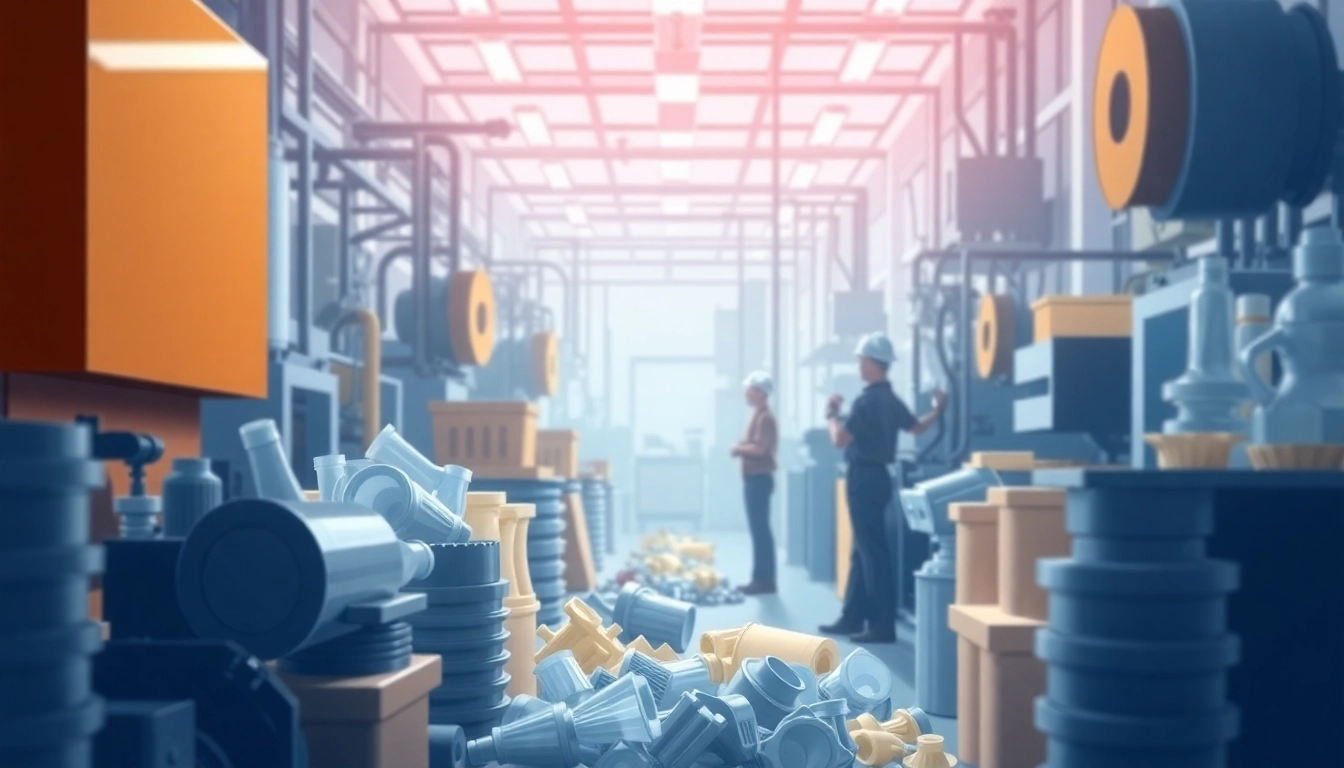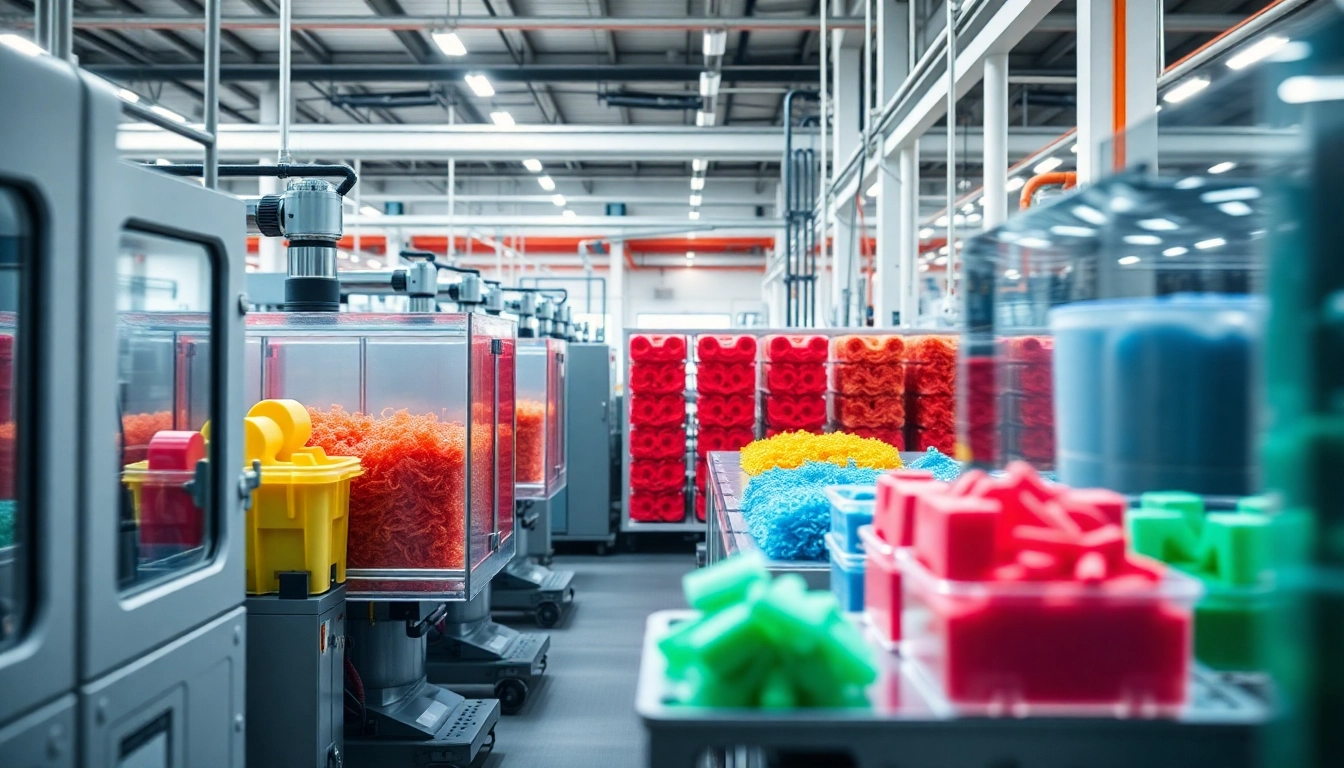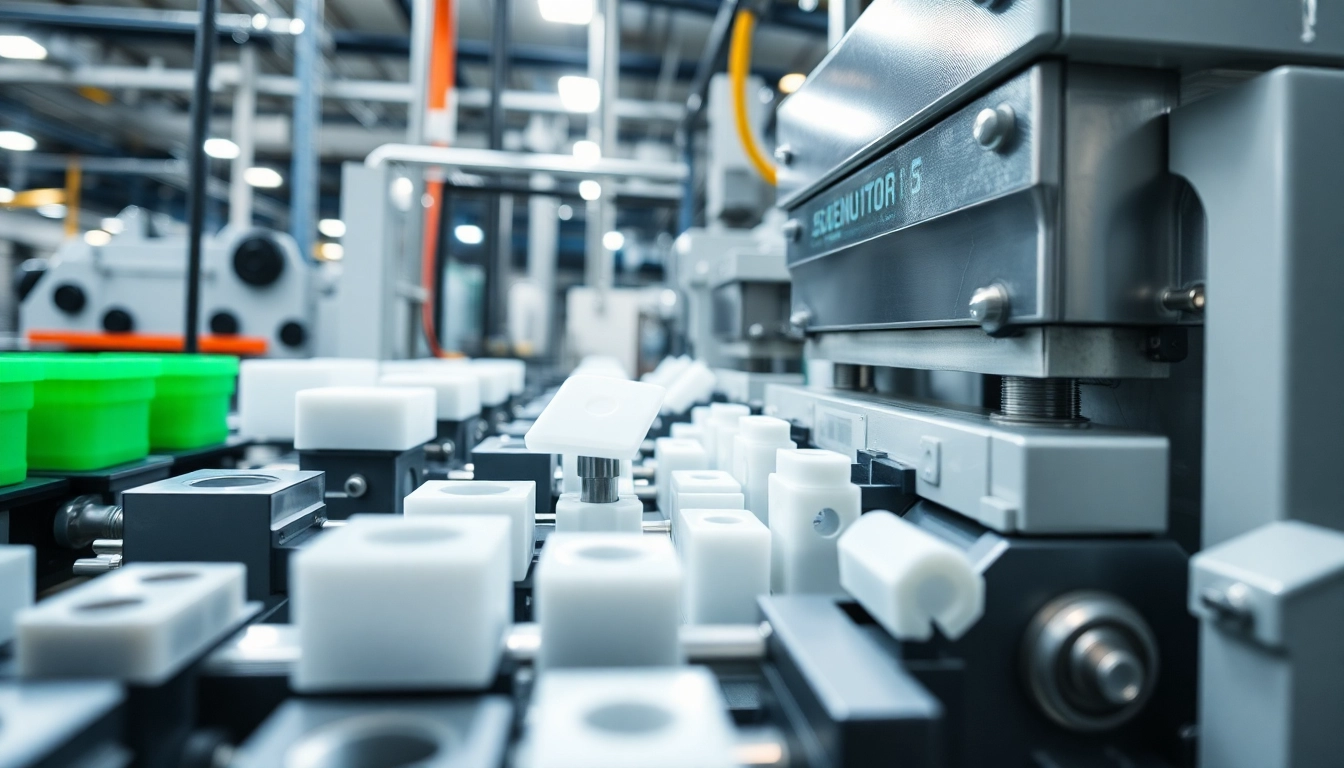Understanding Blow Moulded Plastic Parts
What Are Blow Moulded Plastic Parts?
Blow moulded plastic parts are hollow plastic objects produced via a manufacturing process known as blow molding. This technique involves inflating a heated plastic tube, called a parison, inside a specially designed mold. Once the plastic cools and hardens, the mold is opened, and the finished product is ejected. This process is widely employed to create a variety of products, including bottles, containers, and other hollow shapes that range from simple to complex geometries. As an efficient fabrication method, blow moulded plastic parts are integral to numerous industries such as packaging, automotive, consumer goods, and many more.
Key Benefits of Blow Moulding
The blow moulding process offers numerous benefits that make it a preferred choice in the production of plastic parts:
- Cost Efficiency: Blow moulding allows for the mass production of plastic parts at a lower cost compared to other manufacturing methods, especially for large and hollow components.
- Design Flexibility: Manufacturers can create intricate shapes and sizes that meet specific functional and aesthetic requirements. This flexibility increases the potential for innovative product development.
- Reduced Material Waste: The blow moulding process minimizes waste through efficient use of materials. Excess plastic can often be reused or recycled within the manufacturing process.
- Speed of Production: Blow moulding generally has shorter cycle times, which translates to faster production rates and quicker turnaround for delivering products to market.
- Durability: Products made using blow moulding are typically robust, making them suitable for various applications where strength and resilience are crucial.
Common Applications in Industries
Blow moulded plastic parts find applications across diverse industries due to their versatility. Some of the common applications include:
- Packaging: Food and beverage containers, consumer goods packaging, and medical supply containers are frequently made using blow moulding.
- Automotive: Components such as fuel tanks, air ducts, and various other parts that must meet stringent quality and reliability standards are produced using blow moulding.
- Consumer Products: Items like household goods, toys, and sporting equipment often feature blow moulded components due to their lightweight and durable properties.
- Industrial Applications: Tanks, pipes, and equipment housings that require high-volume production can leverage blow moulding for effective manufacturing.
The Blow Moulding Process Explained
Overview of Different Blow Moulding Techniques
There are three main types of blow moulding techniques that manufacturers can choose from, depending on the product requirements:
- Extrusion Blow Moulding (EBM): This method involves extruding a parison which is then clamped into a mold, where air is introduced to shape the part. EBM is ideal for producing larger, hollow parts like containers and bottles.
- Injection Blow Moulding (IBM): In this process, plastic is first injected into a mold to form a preform, which is then inflated into the final shape. IBM is often used for creating smaller, precise parts such as pharmaceutical and cosmetic bottles.
- Injection Stretch Blow Moulding (ISBM): Combining both injection and stretch blow moulding, this technique is used to enhance the strength and clarity of the final product. It’s commonly used for producing PET bottles and containers.
Materials Used for Blow Moulding
Various types of plastic resins are suitable for blow moulding. The most commonly used materials include:
- Polyethylene (PE): Available in different densities (HDPE, LDPE, and LLDPE), polyethylene is renowned for its versatility and strength.
- Polypropylene (PP): This material offers good chemical resistance and is often utilized in automotive and industrial applications.
- Polyethylene Terephthalate (PET): Known for its outstanding clarity and recyclability, PET is extensively used for beverage bottles and containers.
- Polyvinyl Chloride (PVC): With good durability and weather resistance, PVC is used in various applications, from packaging to construction.
Step-by-Step Guide to Blow Moulding
The blow moulding process can be outlined in a series of fundamental steps:
- Creating the Parison: A plastic resin is melted and extruded into a tubular shape, forming the parison that will be used in the next steps.
- Heating the Parison: The parison is heated to reach a temperature where it is malleable enough for shaping.
- Closing the Mould: The heated parison is placed within a split mould, which closes around it.
- Inflating the Parison: Compressed air is blown into the parison, forcing it to expand and take the shape of the mould.
- Cooling: The part is allowed to cool and solidify, retaining the shape of the mould.
- Opening the Mould: The mould is opened, and the finished product is ejected. Any excess material can be trimmed off if necessary.
Innovations in Blow Moulded Plastic Production
Latest Technologies Enhancing Efficiency
The blow moulding industry is continuously evolving, with innovations aimed at improving production efficiency and product quality:
- Automation and Robotics: Automation in blow moulding processes has led to faster production cycles and reduced labor costs, allowing manufacturers to meet increasing market demands.
- 3D Printing for Mould Creation: The advent of 3D printing technology for mould design allows for faster prototyping and more intricate mould shapes, enabling manufacturers to experiment with designs quickly.
- Advanced Process Controls: Modern blow moulding machines come equipped with sophisticated software that tracks metrics in real-time, allowing manufacturers to optimize processes and reduce downtime.
Eco-Friendly Practices in Blow Moulding
As sustainability becomes a growing concern, the blow moulding industry is adopting eco-friendly practices:
- Recycling: Many manufacturers are using recycled materials, including post-consumer plastics, in their production processes.
- Energy Efficiency: Investments in energy-efficient machinery and practices reduce energy consumption and minimize environmental impact.
- Biodegradable Plastics: The development of biodegradable and compostable plastics offers more sustainable alternatives for blow moulded products.
Future Trends in Blow Moulded Plastic Parts
The future of blow moulding technology looks promising, with several trends likely to shape its development:
- Smart Manufacturing: The integration of IoT technology can facilitate predictive maintenance and smarter production schedules, increasing operational efficiency.
- Customization: The demand for customized blow moulded products is expected to rise, pushing manufacturers towards more flexible production methods.
- Circular Economy Practices: Emphasis on circular economy will promote the production of products that are designed for reuse, recycling, and a sustainable lifecycle.
Challenges in Blow Moulding and Solutions
Common Challenges Faced by Manufacturers
While blow moulding offers many advantages, manufacturers often face a variety of challenges:
- Quality Control Issues: Variability in process conditions can result in inconsistent product quality, which is critical for applications demanding high precision.
- Mold Life and Durability: Molds can wear out over time, affecting production efficiency and quality. Regular maintenance and material choices can mitigate this issue.
- Material Limitations: Some plastic materials may not perform well under specific conditions, limiting the applicability of blow moulded parts.
Cost Management Strategies
Effective cost management is vital for sustaining profitability in blow moulding operations. Strategies include:
- Material Optimization: Using advanced software to optimize material usage and reduce waste can significantly lower costs.
- Process Improvements: Regular training for operators and investing in efficient machinery can help streamline production and reduce overhead costs.
- Supplier Collaboration: Building strong relationships with resilient suppliers can facilitate better pricing and material availability, contributing to cost efficiency.
Quality Assurance Measures
To ensure high-quality output, manufacturers can implement the following quality assurance measures:
- Regular Inspection: Establish frequencies for inspecting moulds, materials, and final products to identify potential problems early.
- Standardized Operating Procedures: Develop detailed SOPs for each aspect of the blow moulding process to maintain consistency and quality across all production runs.
- Feedback Loops: Implement feedback mechanisms that use real-time data to make adjustments and improvements to the production process.
Choosing the Right Supplier for Blow Moulded Plastic Parts
Evaluating Potential Suppliers
Selecting the right supplier for blow moulded plastic parts is crucial and involves thorough evaluation:
- Experience and Expertise: Assess the supplier’s experience in your specific application and their knowledge of the blow moulding process.
- Capacity and Capabilities: Ensure the supplier has the necessary production capacity to meet your demand and can handle the required part specifications.
- Reputation: Research customer reviews and case studies to understand the reliability and quality commitment of the supplier.
Importance of Certifications and Standards
Compliance with industry standards and certifications signifies a supplier’s commitment to quality:
- ISO Certification: Suppliers with ISO certification indicate they adhere to internationally recognized quality management standards, enhancing trust in their processes.
- Industry-Specific Certifications: Depending on the application, certifications related to safety and performance are crucial, especially in healthcare and automotive sectors.
Building Long-Term Supplier Relationships
Establishing and nurturing long-term relationships with suppliers can lead to numerous benefits:
- Consistency: Reliable partnerships can ensure consistent quality and supply, helping businesses meet production timelines.
- Collaboration on Innovation: Joint development of new products or processes can lead to valuable advancements and differentiation in the market.
- Cost Reductions: Long-term relationships often come with negotiated pricing and flexible terms that can help manage supply chain costs effectively.



